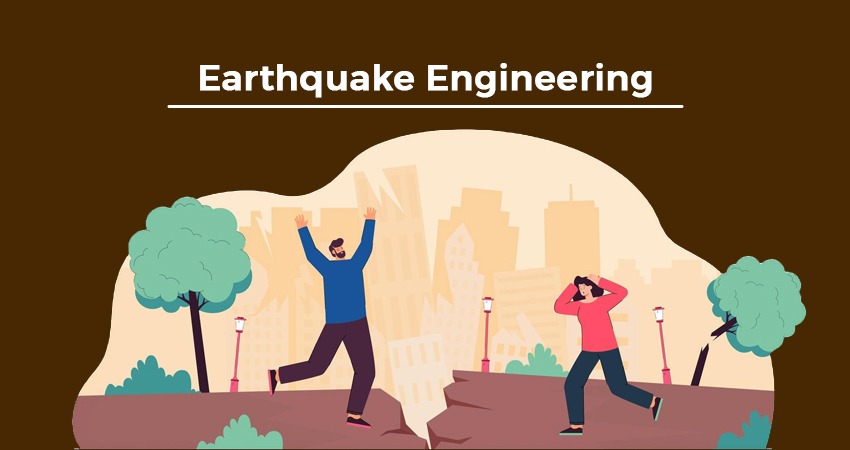User Ideas / Prospects

Earthquake
engineering is one of the most important fields of structural engineering. It
aims to design buildings and infrastructure that can withstand seismic events. Earthquakes
are unique challenges for engineers. They are unpredictable, destructive, and
test the very limits of design. Addressing these challenges requires skill,
creativity, and cutting-edge knowledge.
Understanding
Earthquake Engineering
Earthquake
engineering deals with understanding how structures behave during seismic
activity. Unlike other natural disasters, earthquakes produce forces that work
in complex and dynamic ways. Buildings have to resist both vertical and
horizontal forces. If these forces are not properly managed, they can lead to
severe damage or even collapse.
The
challenge lies in predicting and controlling these effects. Engineers should
design structures to absorb, dissipate, or resist seismic energy. It's easier
said than done.
Earthquake
Engineering Problems
Uncertainty
in Seismic Activity: Earthquakes cannot be predicted. Their magnitude,
location, and frequency cannot be forecasted. This uncertainty makes the design
a complex process. Engineers use probabilistic models for estimating potential
seismic hazards. The models are useful but not flawless.
Dynamic Forces
and Vibrations:Earthquakes produce dynamic forces that cause vibrations. These
forces vary in intensity and direction. Designing for these forces is
challenging. Materials and designs must endure constant stress without failure.
Soil-Structure
Interaction:The ground beneath a structure is very important during earthquakes.
Different types of soils can either amplify or reduce seismic waves. Loose or
soft soils lead to liquefaction and buildings sink or tilt. Engineers account
for such factors in planning foundations.
Retrofitting
Challenges:Older buildings are not up to the modern seismic standards.
Retrofitting such structures is a challenge. It involves adding strength and
flexibility without changing the usability or aesthetics of the building.
Retrofitting is also expensive and time-consuming.
Material
Limitations:Construction materials, including concrete and steel, have
limitations. They can crack, bend, or break under extreme stress. Engineers
must carefully choose materials. They often combine traditional materials with
advanced ones like fiber-reinforced composites to improve resilience.
Cost Constraints:Earthquake-resistant
design can be expensive. Adding reinforcements, advanced materials, and
innovative designs increases costs. Balancing safety with affordability is a
constant struggle for engineers and stakeholders.
Code Compliance:Seismic building
codes vary across regions. Adhering to these codes can be challenging,
especially in developing countries. Updating codes to reflect the latest
research is essential but slow. Engineers must stay informed and adapt designs
accordingly.
Human
Safety vs. Structural Damage
The
main objective of earthquake engineering is saving lives. Indeed, a building
can be designed to save its occupants even when the structure has been damaged.
However, it is quite challenging to do both.
Advanced
Solutions: Despite all these drawbacks, the department of earthquake engineering
evolves with time and age. Engineers use high technologies that improve seismic
performance.
Seismic Isolation:
Base isolators
minimize the passage of seismic forces to the structure. They give the building
the capability to move independent of the ground, thus avoiding most damage.
Damping Systems: Damping systems
absorb energy from seismic events and reduce vibration. These comprise tuned
mass dampers and viscous dampers. They work well in high-rise buildings.
Smart Materials: Some materials
are new to the table, such as shape-memory alloys and self-healing concrete.
They adapt to stress and can recover from slight damage, meaning they are very
durable.
Digital Tools: Advanced software
and simulations help engineers model seismic behavior. It is high time to get
accurate insight into how these structures will perform during an earthquake.
Role of Research
and Education: Continuous research is the key to overcoming the difficulties of
earthquake engineering. Engineers require the latest studies, techniques, and
technologies. Education and professional development are just as important.
This
ensures that budding and seasoned engineers remain updated. Websites such as
Engineers Heaven are precious sources. On the website, there is an array of information,
tools, and insight to aid engineers in refining their skills while dealing with
seismic challenges effectively in Structural Engineering.
Conclusion
Earthquake
engineering is a dynamic and demanding field. It requires innovation,
precision, and dedication. The challenges notwithstanding, engineers are doing
fantastic work. By harnessing new technologies and knowledge, they are building
safer and more resilient structures.
And
indeed, for anyone interested in structural engineering, this is a great
journey. All knowledge and resources, such as the ones you'll find on Engineer’s Heaven, help achieve success in such a journey. Whether it is a student or a
working professional, this all makes the difference.
(Disclaimer: This statistics could be different in different part of World and Different timeline. this statistics has been generated based on data available till 2025 or relavant time span.)
